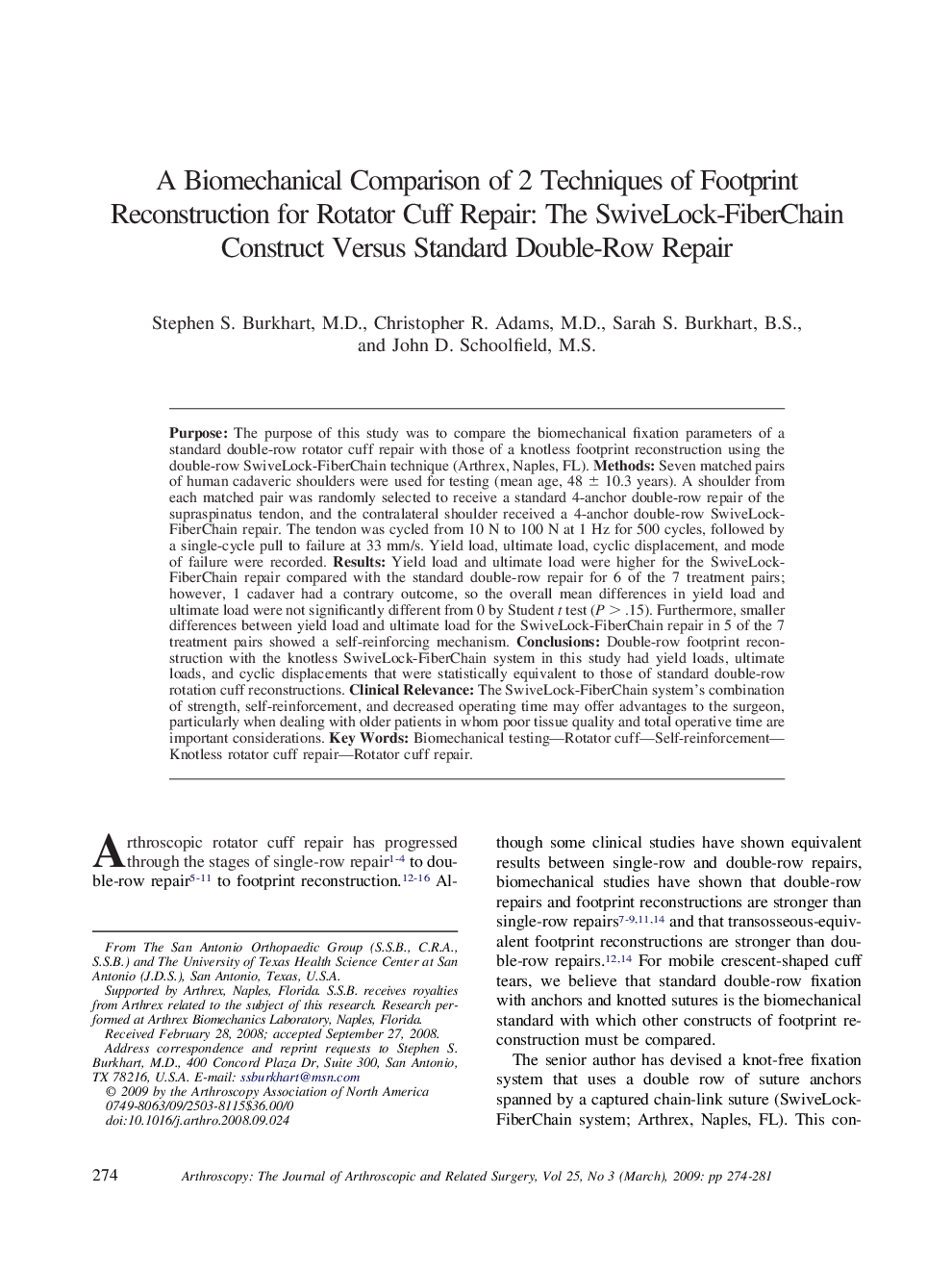| کد مقاله | کد نشریه | سال انتشار | مقاله انگلیسی | نسخه تمام متن |
|---|---|---|---|---|
| 4046613 | 1603574 | 2009 | 8 صفحه PDF | دانلود رایگان |

PurposeThe purpose of this study was to compare the biomechanical fixation parameters of a standard double-row rotator cuff repair with those of a knotless footprint reconstruction using the double-row SwiveLock-FiberChain technique (Arthrex, Naples, FL).MethodsSeven matched pairs of human cadaveric shoulders were used for testing (mean age, 48 ± 10.3 years). A shoulder from each matched pair was randomly selected to receive a standard 4-anchor double-row repair of the supraspinatus tendon, and the contralateral shoulder received a 4-anchor double-row SwiveLock-FiberChain repair. The tendon was cycled from 10 N to 100 N at 1 Hz for 500 cycles, followed by a single-cycle pull to failure at 33 mm/s. Yield load, ultimate load, cyclic displacement, and mode of failure were recorded.ResultsYield load and ultimate load were higher for the SwiveLock-FiberChain repair compared with the standard double-row repair for 6 of the 7 treatment pairs; however, 1 cadaver had a contrary outcome, so the overall mean differences in yield load and ultimate load were not significantly different from 0 by Student t test (P > .15). Furthermore, smaller differences between yield load and ultimate load for the SwiveLock-FiberChain repair in 5 of the 7 treatment pairs showed a self-reinforcing mechanism.ConclusionsDouble-row footprint reconstruction with the knotless SwiveLock-FiberChain system in this study had yield loads, ultimate loads, and cyclic displacements that were statistically equivalent to those of standard double-row rotation cuff reconstructions.Clinical RelevanceThe SwiveLock-FiberChain system's combination of strength, self-reinforcement, and decreased operating time may offer advantages to the surgeon, particularly when dealing with older patients in whom poor tissue quality and total operative time are important considerations.
Journal: Arthroscopy: The Journal of Arthroscopic & Related Surgery - Volume 25, Issue 3, March 2009, Pages 274–281